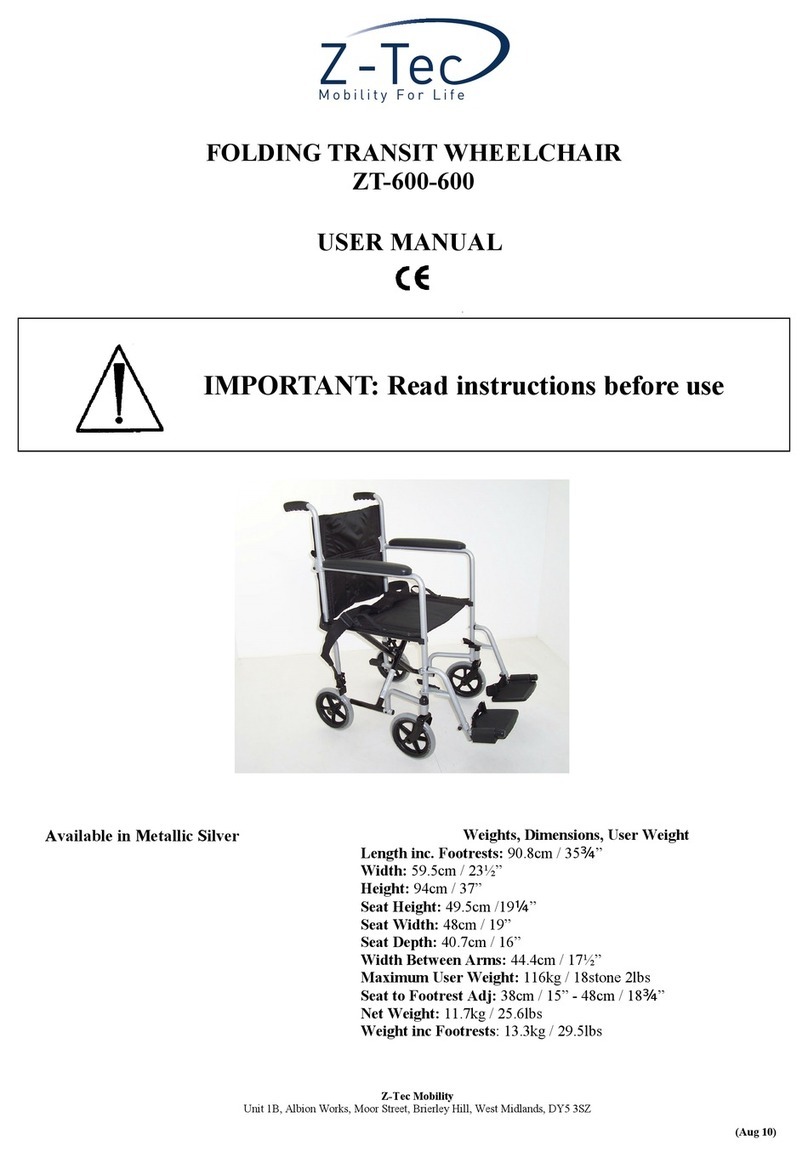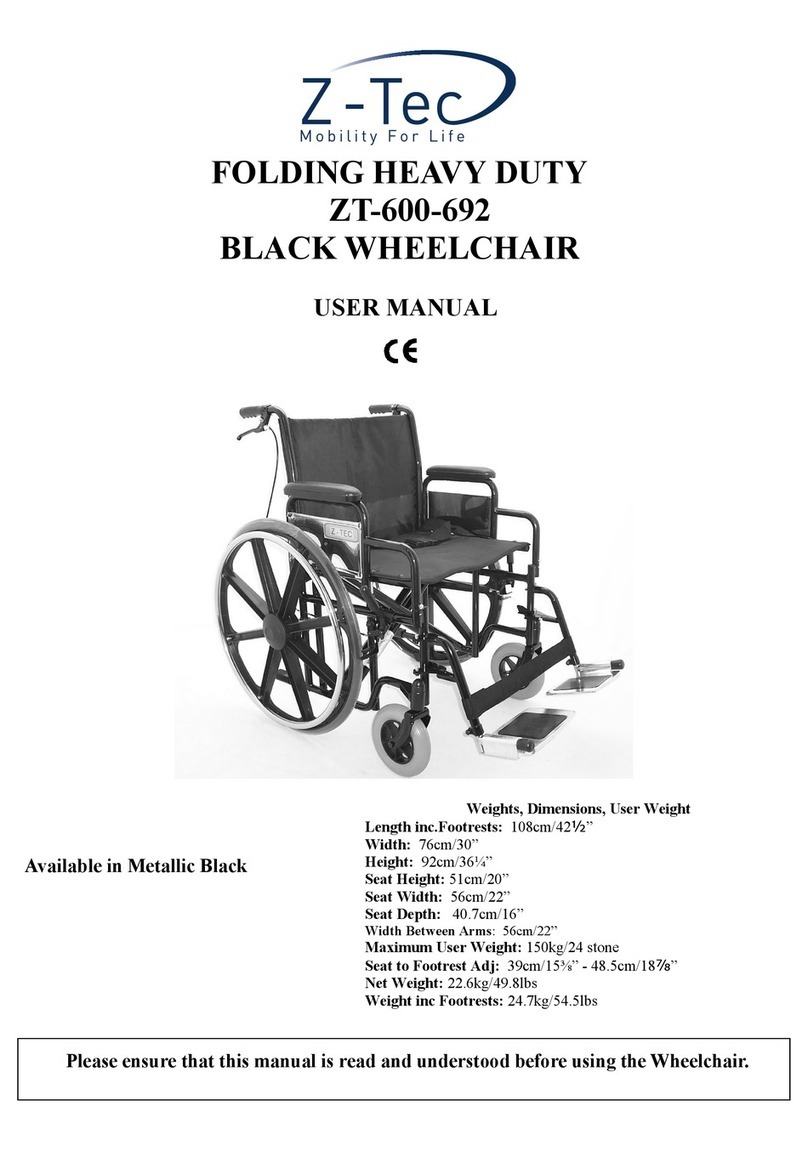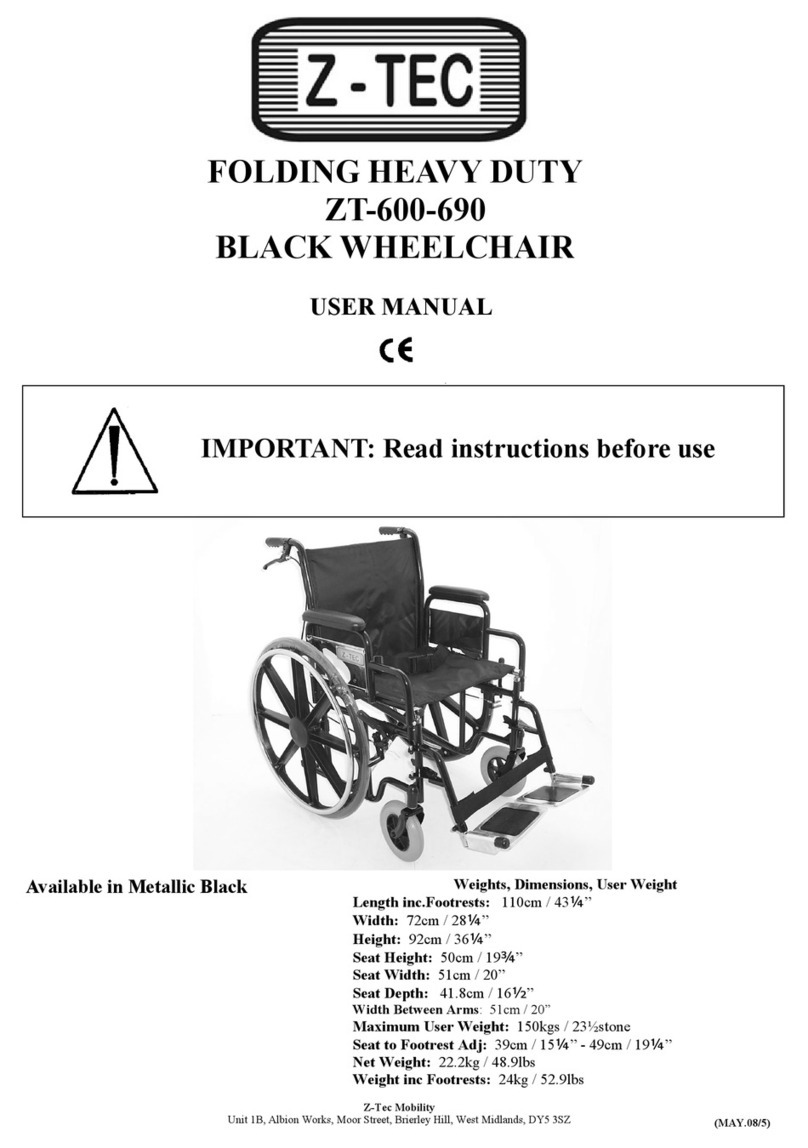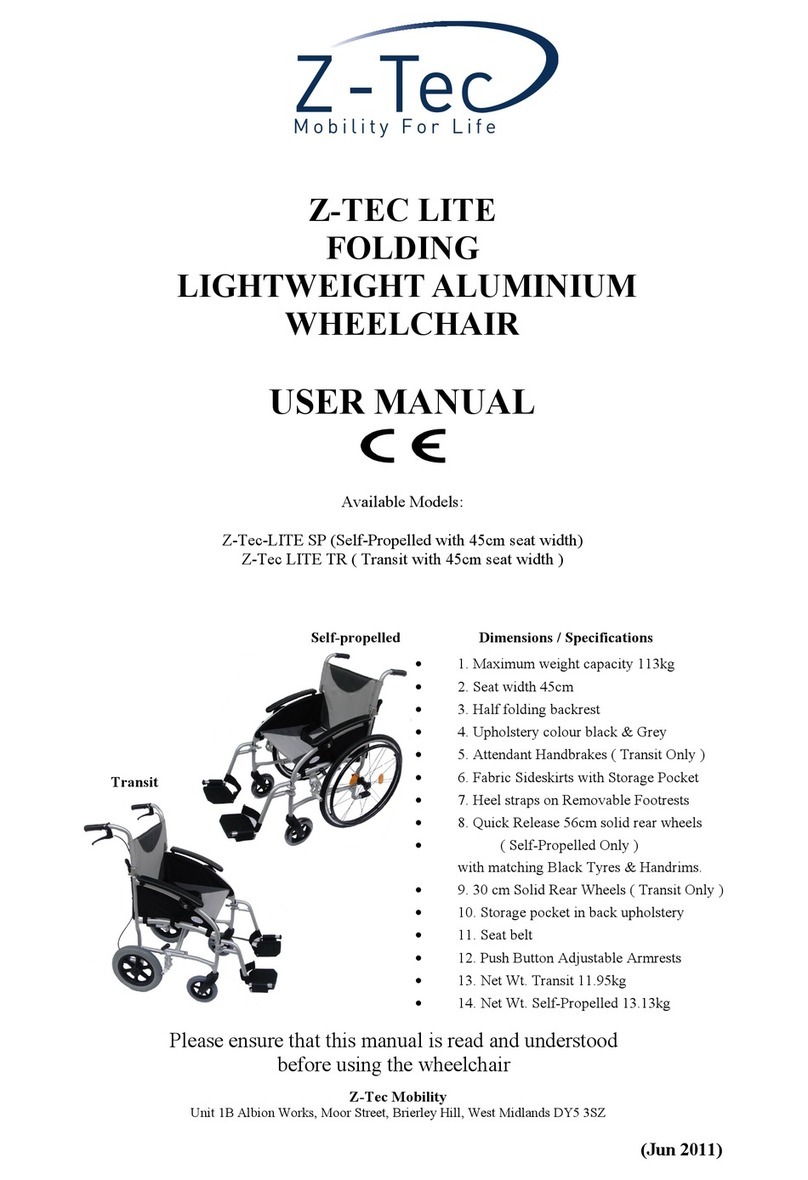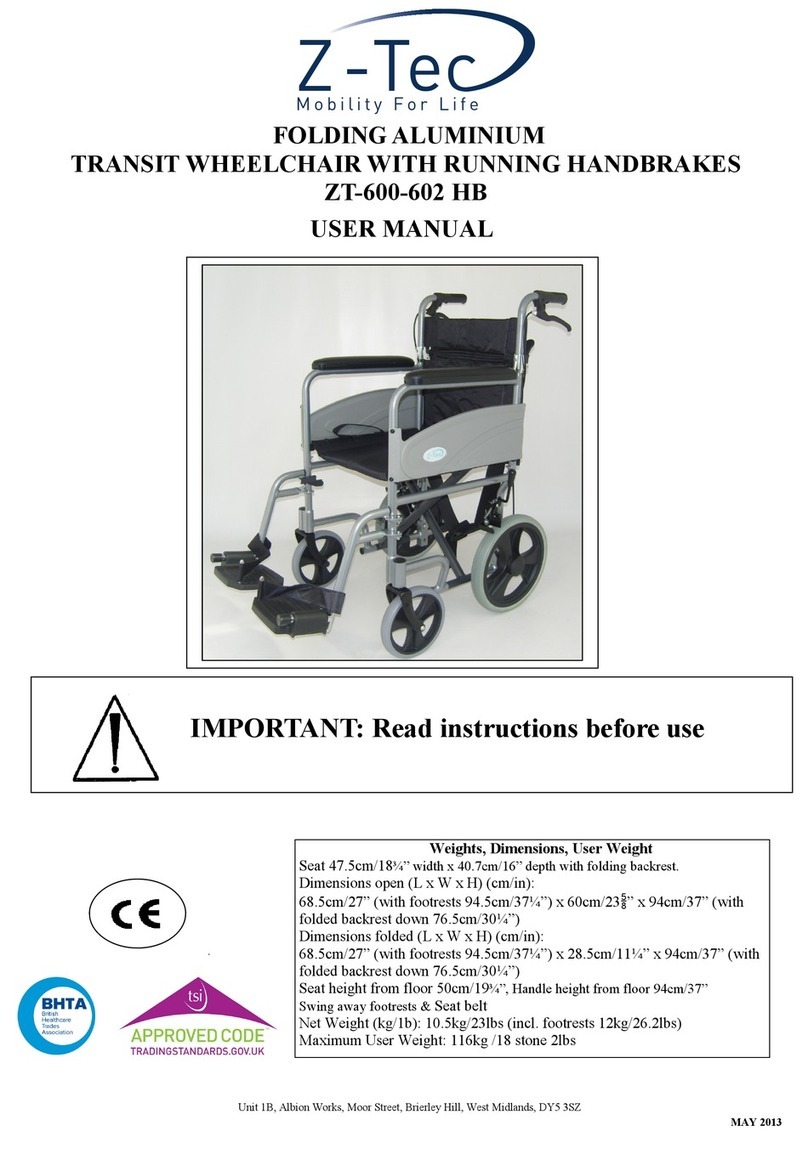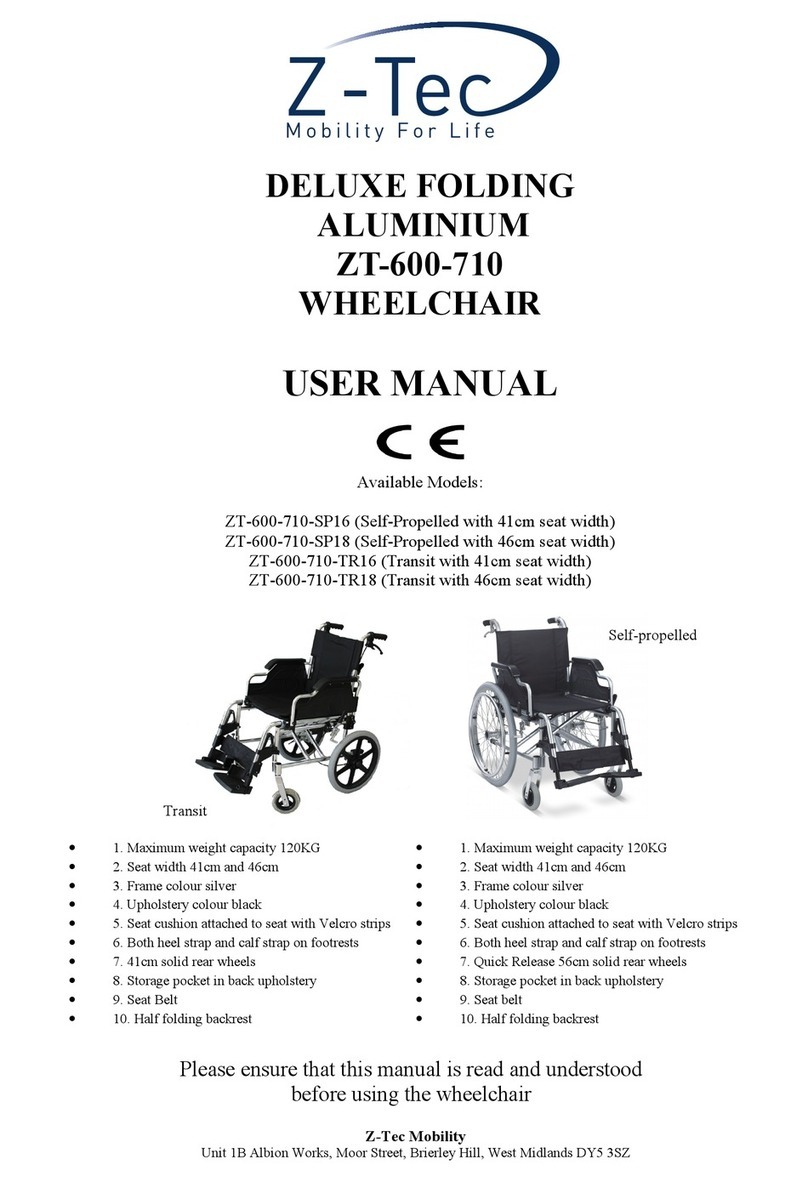
Points To Remember When Using The Chair
•Ensure that all brakes are in good condition and work correctly.
•Check that the front castors and rear wheels rotate freely and are
free from any damage.
•Ensure that the seat and back canvas are in good condition prior to
use and the back is positioned correctly.
•Check that all detachable parts are fitted and functioning correctly.
•When the chair is pushed by an attendant two hands must be
placed on the push handles at all times.
•Always avoid an uneven ground, particularly soft or slippery
surfaces.
•When the chair is stationary it is recommended that the brakes are
applied at all times.
•Avoid making sharp or sudden turns that can alter the centre of
gravity of the chair and user, resulting in reduced stability.
•Avoid hanging heavy objects from the rear of the wheelchair that
will affect the chairs stability.
Ascending & Descending Kerbs
Wherever possible it is recommended to ascend or descend pavements by
dropped kerbs. If a dropped kerb is not available then the kerb must be
approached slowly at a 90 degree angle and the chair tipped gently
backwards to ascend the kerb. It is recommended that where possible an
attendant assists with ascending and descending kerbs. Where the chair is
controlled by the attendant then both hands must remain on the push
handles at all times when ascending or descending a kerb.
In some instances the anti tips may need to be rotated or removed to do
this. They should be replaced or repositioned immediately afterwards.
Descending a kerb should be carried out in the reverse, approaching a
kerb backwards and allowing the attendant to gently roll and lower the
rear wheels over the edge of the kerb, supporting with the push handles
and pulling the chair gently backwards until both rear wheels and front
castors are clear of the kerb.
The wheelchair and occupant should never be tipped forwards when
ascending or descending kerbs.


